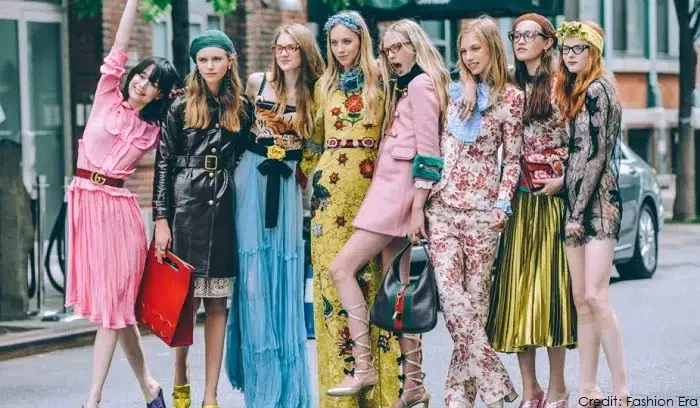Fashion
Why Are We Seeing a Surge in Maximalism? Unpacking the Latest Fashion Trend

- The fashion industry is transitioning from minimalism to maximalism, fuelled by a need for self-expression, uniqueness, and nostalgia.
- Social media platforms, particularly Instagram and TikTok, have popularised daring and lavish looks, pushing customers to embrace unconventional fashion choices.
- While minimalism has promoted sustainability and excellence, it’s perceived restrictions and accessibility concerns have fuelled a growing desire for maximalism’s bright and expressive nature.
In recent years, the fashion industry has transformed, moving away from the minimalist look that once dominated runways and closets. As designers and consumers increasingly favour maximalism, this shift reflects deeper cultural and societal factors. This article examines the causes that have contributed to this change, including the attractiveness of maximalism, the constraints of minimalism, and the consequences for the future of fashion.
The Allure of Maximalism
Maximalism contrasts sharply with minimalism, which is known for its vibrant colours, detailed patterns, and lavish decoration. This vivid trend is gaining traction as people want attire that makes a statement and reflects their uniqueness. The urge for self-expression has never been stronger, and many people use fashion to express their unique characteristics.
The return of maximalism can be traced back to a larger cultural shift towards inclusivity and diversity. People are increasingly eager to experiment with their styles, push limits, and wear clothes that reflect their identities. As a result, fashion has transformed into a canvas for creativity, with maximalism providing an exciting playground for individuals seeking to stand out.
The Impact of Social Media
Social media platforms such as Instagram and TikTok have contributed significantly to the emergence of maximalism. Influencers and content creators are now showcasing lavish ensembles that draw attention and motivate their followers to make bolder fashion decisions. This online visibility has changed people’s perceptions and interactions with fashion, prompting them to try more dynamic and bright trends.
The influence of social media has created a culture that values self-expression and encourages individual fashion choices. Individuals feel liberated to experiment with their clothes, frequently combining unexpected components to produce eye-catching combinations.
Nostalgia and Power of the Past
Maximalism frequently draws inspiration from earlier times, including the Victorian and Rococo periods, as well as the Art Deco movement. This nostalgic approach appeals to people seeking a connection to history and tradition. The resurrection of these styles enables people to blend elements from the past into their present wardrobes, producing a sense of continuity and depth in their fashion choices.
In a world that can feel chaotic and stressful, the attraction of nostalgia provides a welcome respite. By embracing the depth of history via fashion, consumers may create a personal connection to their apparel that lasts beyond passing trends.
The Limits of Minimalism
While minimalism has its advantages, it also has limitations. Critics claim that the practice is extremely restricted, restricting self-expression and innovation. The clean lines and neutral palettes associated with minimalism may unintentionally create a sense of sameness, making it harder for people to distinguish themselves from others.
Furthermore, despite its emphasis on quality over quantity, minimalism can promote consumption and waste. The manufacture of high-quality minimalist objects can have a considerable environmental impact, raising questions regarding sustainability. In this situation, minimalism may not be as environmentally benign as it seems.
Accessibility is another issue that hinders the minimalist movement. Investing in high-quality materials and timeless designs is frequently prohibitively expensive, making minimalist fashion less accessible to individuals on a tight budget. As customers seek more cheap solutions, maximalism, which is defined by innovation and accessibility, gains traction.
The Future of Fashion
As minimalism fades, maximalism is poised to take centre stage. However, it is critical to remember that fashion is essentially cyclical, and trends can shift in unexpected directions. While maximalism reflects the current zeitgeist, minimalism may reemerge in a more subtle or modern form in the future.
Meanwhile, the fashion industry is expected to continue to evolve in response to shifting consumer wants and preferences. With a greater emphasis on individuality, self-expression, and sustainability, a variety of trends will arise, each appealing to a distinct facet of the human experience.




















































